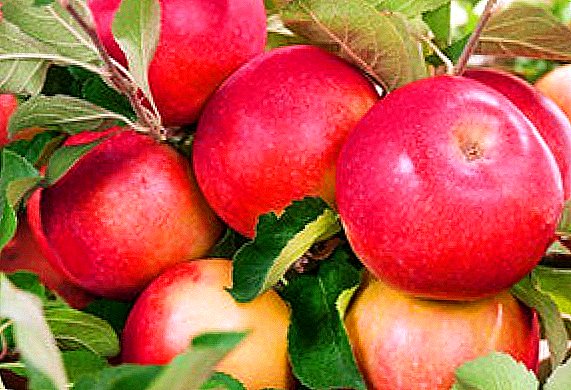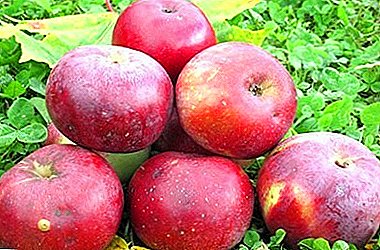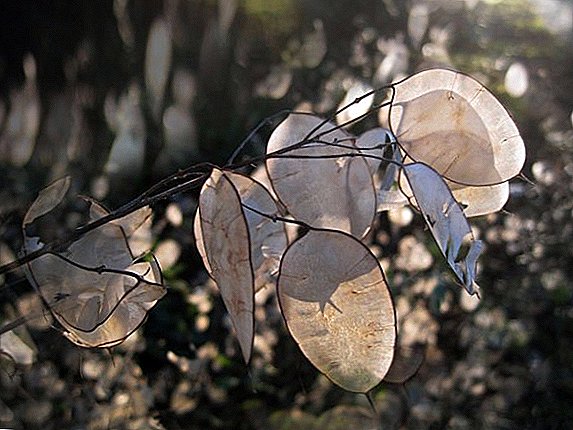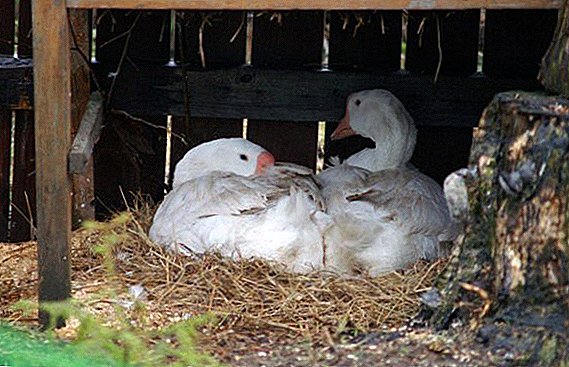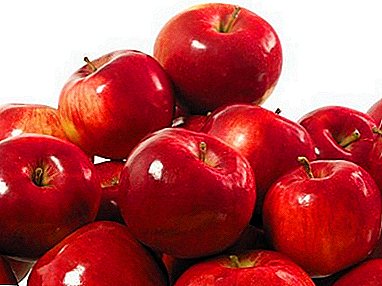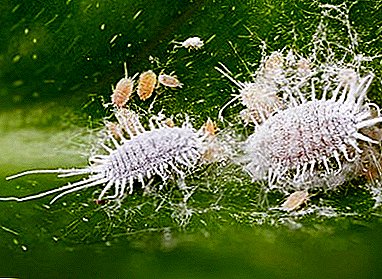
Every grower and mistress is happy and happy when their favorite plant is healthy and happy with its appearance and flowering.
The appearance of pests on plants is always a very sad and exciting situation.
But do not immediately get upset. In the modern world there are no such parasites for flowers that people could not handle. Mealybug is one of these pests.
What is this pest and what does it look like, photo
The mealybug, which is also called the felt or false airbag, is one of the most frequently encountered and most unpleasant indoor pests. The number of species is about 2,200. The insect is parasitic and sucking. His livelihoods have a detrimental effect on indoor plants. In some cases, can lead to the death of the flower. A very prolific insect that can create about four generations in one year.
Chervets are small and medium. Length from 3 to 8, in rare cases up to 10 mm. The body of the females is oval. Whole body in powdered wax - similar to flour. Due to this, in appearance it looks like a white insect covered with down. During breeding, the female places herself in a vat-like bag. By its nature, mealybug is similar to aphids.



What plants are parasitic on?
All kinds of citrus fruits are a favorite flour mealybug plant. Do not refuse to settle on such plants as:
- ferns;
- peperomia;
- anthurium;
- dieffenbachia;
- brunfelsia;
- violet;
- chlorophytum;
- orchidáceae and many others.
How long does it live?
This insect can be considered a long-liver. He lives by feeding on the juice of the plant. In the case when one of his victims does not give him more food for life, he moves to another plant. On average, the life cycle of one specimen is about 2.5–3 months after the appearance of the larva.
What types are most common?
Bristly

Externally, this parasite has an oval body shape with a slight lengthening. The color is slightly pinkish or orange with a characteristic bloom of white. Last pair of abdominal setae longer than the rest. A large accumulation of stubble bite can be observed on the back side and in the leaf axils, on the branches of the plant. Refers to viviparous species.
Grape

The female has an inherent wide oval shape. This type of chervets most attracts the subtropical climate. Pink or yellow color refers to this species. The whole body has a patina. In marshmallows it is extremely rare to meet males. The emerged larvae occupy the entire plant from shoots to leaves, or rather their main veins. Highlighting of the bite leads to the appearance of black fungi in these places.
Seaside

The most harmful and at the same time common species. The color has a gray-pink with a whitish bloom. The seaside bite is well developed limbs, which contributes to their rapid movement through the plant. Unlike females of this species, males have wings and move in space throughout the summer.
The females lay offspring in difficult - accessible places, for example in the bark of trees, up to 350 - 400 eggs. A feature of the larvae is the absence of white plaque on the body. The larvae of the seaside worm turn into an adult within one month.
Citrus

The color of this species is very diverse - from brown to slightly yellow. WITHThe citrus orange hooks secrete a pad, i.e. sweet secret. Males of this species, as well as seaside worms are able to fly. Males are more often pink or yellow in color.
Harm from this insect
For the plant
The harm of such pests is that, regardless of the species, they all feed on the sap of the plant. At the time of absorption of the juice, they inject into the flower the digestive enzymes that are in their saliva. From this flower:
- weakens;
- dries;
- leaves begin to fall.
In addition, all individuals leave behind a secret, in place of which a black fungus appears.
Is it dangerous for humans?
A person can be calm, this parasite is a threat only to plants. For humans, mealybugs are absolutely harmless., unless you count the spent nerves on the experiences for their favorite indoor plants.
Causes of
 The consequence of the appearance of such a pest are the wrong conditions for the growth and development of the plant.
The consequence of the appearance of such a pest are the wrong conditions for the growth and development of the plant.
It may be:
- excess nitrogen in the room, which leads to disruption of metabolic substances;
- very dry air;
- low temperature;
- soil overflow;
- untimely cleaning of a flower from dry, dead leaves.
How to save a flower from adversity?
Having resorted to proven, popular methods of dealing with the worm, we can confidently say that almost every hostess can find the means of such a worst pest.
Method "Soap-alcohol spraying"
To prepare the solution should:
- Grind laundry soap to get 1.5 - 2 teaspoons.
- Soap must be dissolved in 1.5 liters of boiling water.
- Cool the resulting mixture to room temperature, then add 3 teaspoons of alcohol or 5 battens of vodka, mix.
- Spray first those areas of the plant on which the parasites are visible, then all other areas.
Important! Do not allow substance to enter ground.
- Wipe the plant with a swab moistened with a solution.
Chemical fight
 When choosing a product, you should pay attention to the drugs of combined action.which will immediately affect the adult and the larvae. This method is effective in that it is absorbed into the plant and enters the worm along with the juice, thereby poisoning it. At the same time, remember that chemistry does not pass without a trace for the plant itself.
When choosing a product, you should pay attention to the drugs of combined action.which will immediately affect the adult and the larvae. This method is effective in that it is absorbed into the plant and enters the worm along with the juice, thereby poisoning it. At the same time, remember that chemistry does not pass without a trace for the plant itself.
If the solution to the problem was the use of chemicals, then re-use should be done in 1 - 1.5 weeks in order to save the flower from new individuals that hatched in this time interval.
About the best preparations from the worm are described in detail in this article.
Preventive action
- Occasionally check all growing flowers for pests. Before you place a new plant near the existing one, carefully inspect it.
- Remove dry inflorescences and leaves in time to prevent the parasites from settling in them.
- Periodically arrange colors "great cleaning", i.e. wipe thoroughly all the leaves.
The surest and most reliable way to keep their green, flowering plants in all their glory - the right care and maintenance conditions. Along with this, it is important to keep track of all emerging changes in the flowers, growing in attention and care. When purchasing new plants in your home, buy them from trusted vendors..
In some cases, you should place the novice in a room isolated from other colors. All this is done in order to observe him for some time.
Do not rush into panic from the appearance of pests on flowers, the main thing is to correctly assess the extent of the problem and to begin measures to eliminate them. Then your flowers will please the eye and soul with its beauty, flowering and aroma for a long time.


